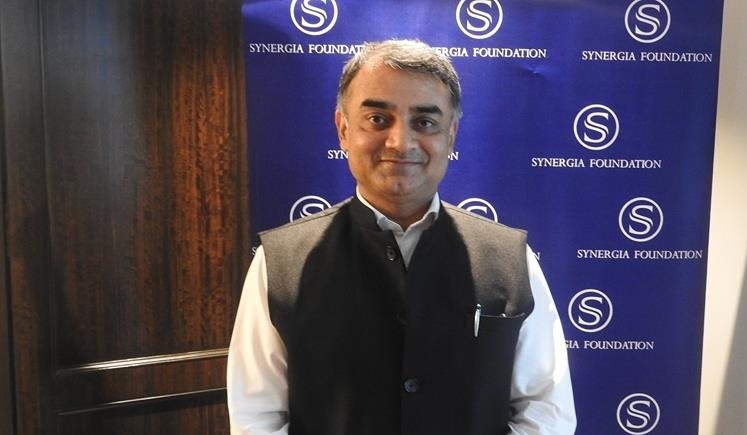Anti-Corruption Mechanism in India
February 9, 2018 | Expert Insights

In July 2017, the Synergia Forum hosted a talk on the 'Anti corruption mechanism in India' featuring speaker Shri. Rupak Kumar Dutta, an IPS Officer of 1981 Batch (Karnataka Cadre), who is currently the Chief Director General and Inspector General of Police. He spoke from his experience of about 36-37 years in the Indian Police Service, half of which has been in the anti-corruption and the remaining in the police.
The key questions that were focused on were:
- India has been ranked low for years despite having anti -corruption mechanism in place. Why so? How does it affect governance?
- What needs to be done to make the anti -corruption mechanism more robust?
- An honest citizen is most vulnerable. What can be done to empower him?
The interplay of corruption and inequality feeds populism. Mr. Dutta reminded the audience that there are three types of corruption that we need to address:
- Collaborative Corruption (between the rich & the powerful, both are benefited, and the nation loses)
- Coercive Corruption (between the government and the people, it’s unequal power and people lose)
- Corruption between private individuals/ companies (public loses)
The UN Convention against corruption has emphasized that we need to provide necessary independence to the anti-corruption agencies, free from undue influence.
Though we are a signatory to the UN Convention against corruption, unfortunately our anti -corruption agencies are part of government machinery. They are not independent. What has been our anti -corruption measure so far? We have been only relying on booking cases under the Prevention of Corruption Act. The Scope of Anti -Corruption Law needs to be widened, there is no doubt on that. It is imperative that vigilance mechanism be established in State governments as it will only strengthen government institutions.
What could be the measures? Identification of sensitive areas and making effective, preventive and corrective steps, rotations and transfer of officials in positions, conducting surprise and regular inspections, monitoring the rules and regulations of the organisations, conducting vigilance awareness programs to educate officers for clean, honest, effective and transparent decisions, effective training programs of preventive vigilance, issue of circulars and bulletins and educating officials of importance of preventive vigilance, formulating best practices and manuals for circulation, leveraging and maximum use of technology and having a whistle-blower policy, could be some.
Now, does corruption impede governance? Whether in terms of GDP growth or in terms of justice to poor or in terms of security of the nation - corruption impacts every aspect of life. The Santhanam Committee had emphasized that, corruption cannot be eliminated or even significantly reduced, unless preventive measures are planned and implemented in a sustained and effective manner. It had emphasized that, the liability lies on the head of the department and the head of the organisation.
The Lokayukta institutions do not have much teeth in looking into corruption other than conduct civil inquiries or other inquiries. We need to strengthen the Lokayukta institution. Corrupion happens because of monopoly, discretion and no or less accountability. Fixing of accountability is something which is lacking in our country. Further, apart from the enforcement and the preventive aspect, involving people is important so it has to be participatory. We need to involve people, we need to take them along with the drive against corruption and it has to be holistic. It must be all encompassing, we need to have a preventive aspect, and we need to make it participatory. But very important is the political will. As it should come, it must also be followed by administrative action.








Comments